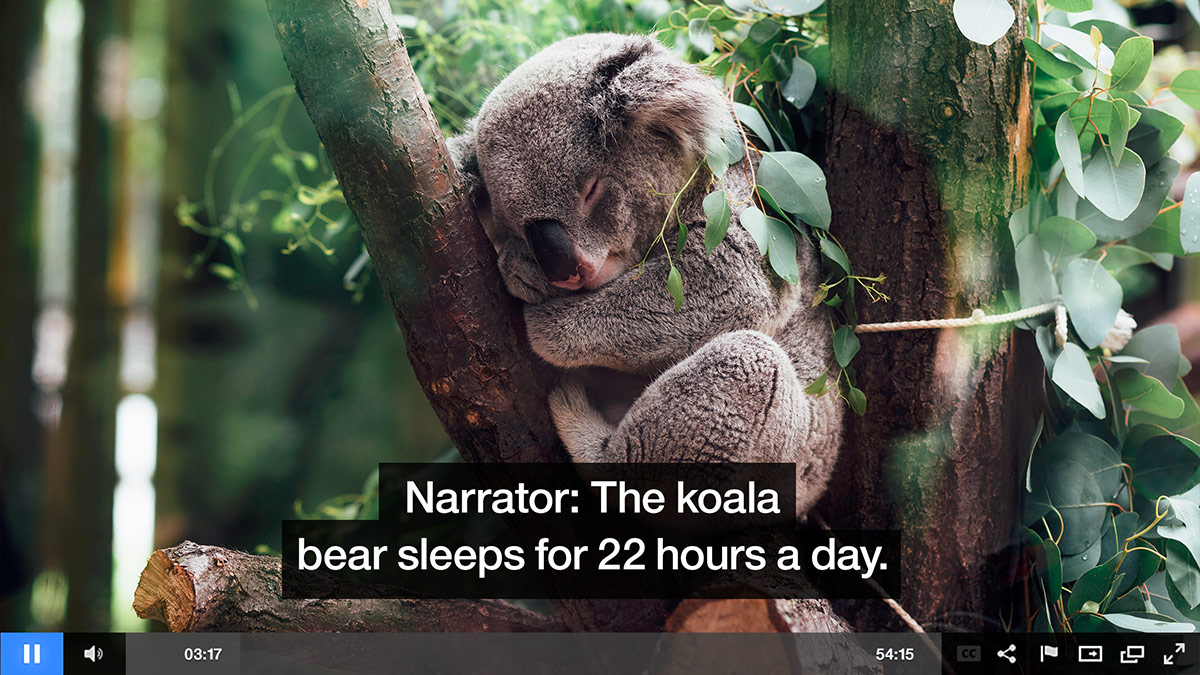The world is filled with diverse voices and stories, and video content is no exception. To ensure inclusivity and accessibility, two essential tools come into play: closed captioning and subtitles. This guide unveils the key differences between these often-confused terms, empowering you to make informed decisions about incorporating them into your video content. We’ll delve into their functionality, target audience, usage scenarios, and technical considerations.
Purpose and Functionality of Closed Captioning
Closed captioning serves a crucial role in making audiovisual content accessible to individuals who are deaf or hard of hearing. By providing a textual representation of dialogue, sound effects, and other audio cues, closed captioning ensures that those with hearing impairments can fully engage with video content. It not only includes spoken words but also conveys essential auditory information, such as music cues or background noises, thereby offering a complete viewing experience.
Moreover, closed captioning extends accessibility beyond personal devices to public spaces like airports, gyms, and restaurants, where sound may not be conducive or available. In these settings, individuals rely on closed captions to follow along with video content without needing to rely solely on audio cues. Thus, closed captioning not only meets legal requirements for accessibility but also fosters inclusivity in various social and entertainment contexts.
Purpose and Functionality of Subtitles
Subtitles serve multiple purposes and functionalities, making audiovisual content more accessible and enjoyable for diverse audiences:
- Language Translation: One of the primary purposes of subtitles is to translate dialogue or narration from one language to another. This functionality allows viewers who do not understand the original language to follow along with the content.
- Enhanced Understanding: Subtitles can enhance understanding for viewers, even if they are fluent in the language of the audio. They provide visual reinforcement of spoken words, making it easier to grasp subtle nuances or accents, especially in dialogue-heavy scenes.
- Accessibility for Foreign Language Viewers: Subtitles enable foreign language viewers to access content that they otherwise might not understand. This functionality is particularly crucial for international distribution of films and TV shows, allowing creators to reach a broader audience.
- Aid for Individuals with Auditory Processing Disorders: Subtitles benefit individuals with auditory processing disorders by providing a visual representation of spoken words. This visual reinforcement can improve comprehension and retention of content for those who struggle with auditory processing.
- Improving Language Learning: Subtitles are also valuable tools for language learners. By displaying both the spoken words and their translations, subtitles facilitate language acquisition and help learners understand context and pronunciation.
Overall, subtitles play a vital role in making audiovisual content accessible and enjoyable for a diverse audience, spanning language barriers and accommodating various learning and accessibility needs.
Differences Between Closed Captioning and Subtitles
| Aspect | Closed Captioning | Subtitles |
| Linguistic Coverage | Includes dialogue, sound effects, speaker IDs, etc. | Translates spoken language only |
| Language | Often in the same language as the audio | Typically in a different language for translation |
| Display | Can be toggled on or off by the viewer | Displayed throughout the entire video |
Now, let’s delve into the differences between closed captioning and subtitles:
- Linguistic Coverage: Closed captioning encompasses various audio elements, including dialogue, sound effects, speaker identifications, and other auditory cues. In contrast, subtitles focus solely on translating spoken language, omitting non-verbal elements such as sound effects or speaker attributions.
- Language: Closed captioning is typically presented in the same language as the audio content, allowing viewers to follow along with the dialogue and audio cues simultaneously. Subtitles, however, are often in a different language from the original audio, serving the purpose of translation for foreign language viewers.
- Display: Closed captioning can be toggled on or off by the viewer, providing flexibility in accessibility. Viewers have the option to enable closed captions based on their preferences or needs. Subtitles, on the other hand, are typically displayed throughout the entire duration of the video, ensuring that foreign language viewers can follow along with the dialogue consistently.
These distinctions highlight the unique functionalities and purposes of closed captioning and subtitles, catering to different audience needs and preferences.
Common Uses and Applications of Closed Captioning
Common Uses and Applications of Closed Captioning span across various industries, reflecting its versatile utility.
Television and Film Industry
Closed captioning is a standard practice in the television and film sector, ensuring that content is accessible to a broader audience, including those with hearing impairments. This is often mandated by accessibility regulations to promote inclusivity in entertainment.
Online Video Streaming Platforms
Leading platforms like Netflix and YouTube incorporate closed captioning options, allowing users to enable or disable subtitles based on their preferences. This feature caters to diverse viewer needs and enhances the overall accessibility of online content.
In addition to these, closed captioning plays a crucial role in educational settings, where it ensures that instructional videos are accessible to all students, including those with hearing impairments. This widespread adoption of closed captioning reflects its significance in making content accessible to a broad spectrum of audiences.
Common Uses and Applications of Subtitles
- International Distribution of Films and TV Shows:
- Subtitles are essential for distributing films and TV shows to international markets.
- By providing translations of dialogue and narration, subtitles enable viewers in different countries to enjoy content in their native language.
- This facilitates cultural exchange and broadens the global audience for diverse cinematic experiences.
- Online Video Streaming Services:
- Leading streaming platforms like Netflix, Amazon Prime Video, and Hulu offer subtitles for a wide range of content.
- Subtitles cater to the needs of viewers who are non-native speakers of the language in which the content is originally produced.
- Users can choose from multiple subtitle options, including different languages and styles, enhancing the viewing experience and accessibility.
- Educational Materials:
- Subtitles play a crucial role in educational videos and online courses.
- They aid comprehension for students by providing text reinforcement of spoken content, particularly in subjects where complex terminology or accents may pose challenges.
- Subtitles also benefit language learners by offering visual support for vocabulary acquisition and language comprehension.
These diverse applications demonstrate the versatility and significance of subtitles in the realm of audiovisual media, catering to a wide range of audience needs and preferences.
Accessibility Considerations
Accessibility considerations are paramount in ensuring that audiovisual content is inclusive and can be enjoyed by a diverse audience. From a legal standpoint, there are regulations in place that mandate the provision of closed captioning and subtitles, ensuring that individuals with disabilities, especially those who are deaf or hard of hearing, have equal access to information and entertainment.
Beyond legal requirements, implementing accessibility features enhances the overall user experience. Providing closed captioning and subtitles contributes to making content more comprehensible, not only for individuals with hearing impairments but also for those in noisy environments where audio clarity may be compromised. This inclusivity aligns with the principles of universal design, creating a more accessible and welcoming environment for all viewers.
Moreover, considering accessibility in the design and delivery of content can significantly impact user engagement. By accommodating a broader range of needs, content creators and platforms demonstrate a commitment to diversity and inclusivity, fostering positive relationships with their audience. Accessibility considerations, therefore, go beyond compliance, playing a vital role in shaping the viewer experience and reinforcing the importance of equal access to information and entertainment for everyone.

